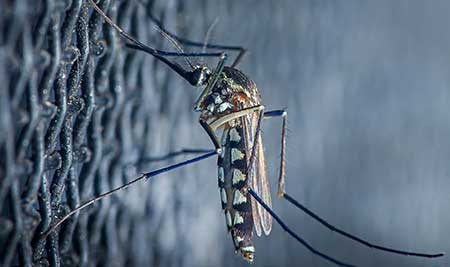If you’ve ever spotted ants on the counter or heard scratching in the walls, chances are pests have found a way into your home. The truth is, most infestations start with something simple — a tiny crack, a loose vent, or a gap under the door. Sealing these entry points is one of the most effective ways to stop pests before they even get inside.
Pests don’t need much space to sneak in. Mice can fit through a hole the size of a 5-cent coin, and cockroaches can flatten themselves to slide through the tiniest cracks. Start by inspecting these high-risk areas.
Also, inspect areas where plumbing or electrical cables enter the house — even a small gap can be an open door for ants or spiders. Don’t forget your roofline and eaves, where loose tiles or gaps in the fascia can lead to nesting pests like rats or possums. Finally, have a good look around your home’s foundation for cracks, as these can let in cockroaches or termites. A flashlight and small mirror can help you check dark corners behind appliances or under sinks.
Sealing Gaps and cracks properly
Once you’ve found the problem areas, it’s time to seal them up. Use silicone or acrylic caulk to close small gaps around windows, doors, and wall joints. For larger holes — especially around pipes or brickwork — fill the space with steel wool and expanding foam. Pests can’t chew through steel wool, making it a reliable barrier.
Adding weatherstripping around windows and door frames can block both drafts and crawling insects, while wire mesh or vent covers are useful for keeping rodents and birds out without affecting airflow. Installing door sweeps at the bottom of external doors can also make a big difference. Before sealing any area, make sure it’s clean and dry so the materials adhere properly and last longer.
Keeping the outside area clear
Even if you’ve sealed your home perfectly, a messy yard can still attract pests. Trim back trees and shrubs so they don’t touch your roof or walls — these can act as bridges for rodents and insects. Store firewood and rubbish bins a few metres away from your home to avoid giving pests a place to hide.
Keep gutters and drains clear of leaves and debris, and make sure there’s no standing water around the property. Leaking taps or downpipes can create the perfect breeding ground for mosquitoes and attract other unwanted guests looking for moisture.
Regular maintenance matters
Weather, time, and everyday wear can reopen entry points, so regular maintenance is essential. Check your home every few months and reapply caulk or replace worn weatherstripping where needed. After heavy rain or storms, inspect your roof tiles, vents, and window screens to make sure they’re still intact. Catching small issues early can prevent major pest problems later.
When to call the professionals
Sometimes, even with all your best efforts, pests still find a way inside. If you notice droppings, gnaw marks, or ongoing insect activity, it might be time to call a licensed pest control expert. Professionals can identify hidden entry points, provide tailored treatments, and give advice on keeping your home protected long-term.
